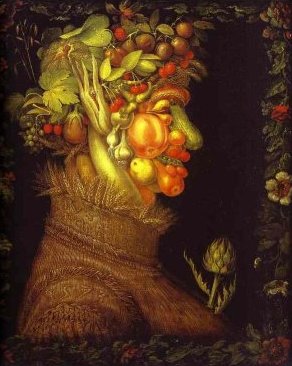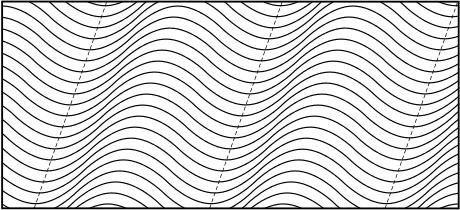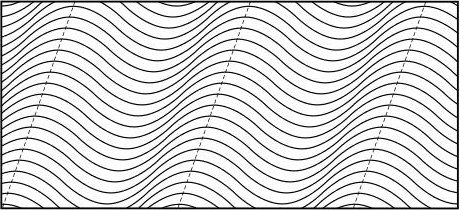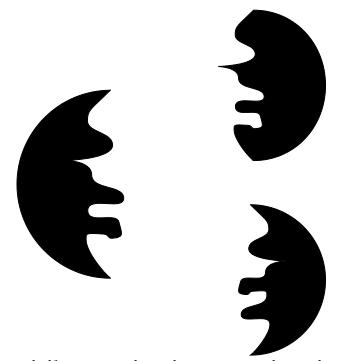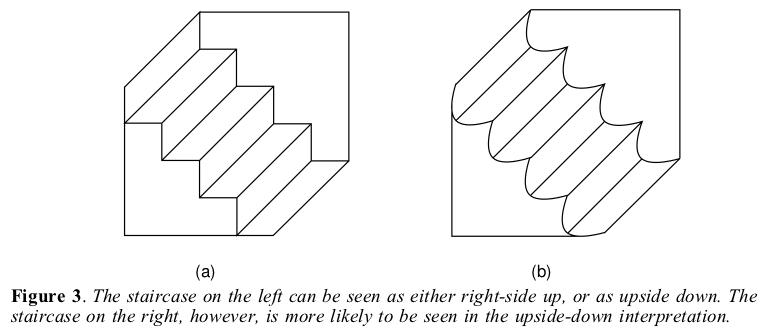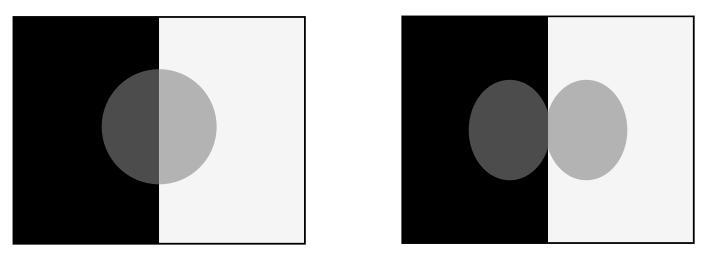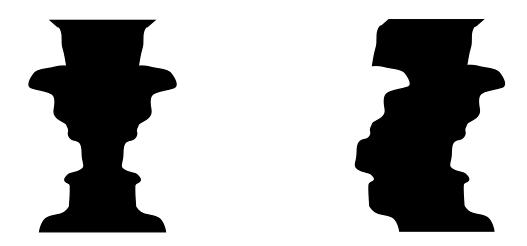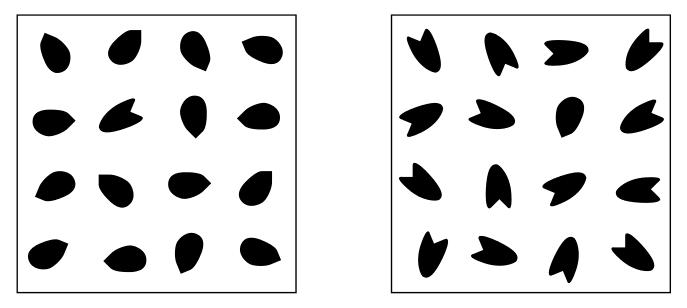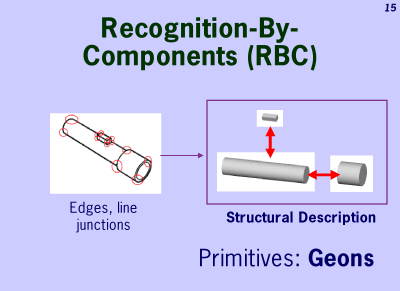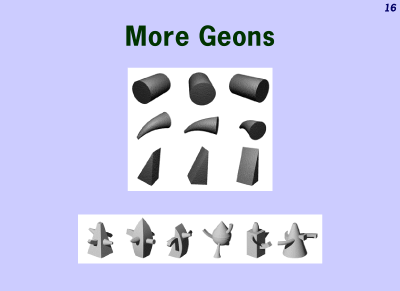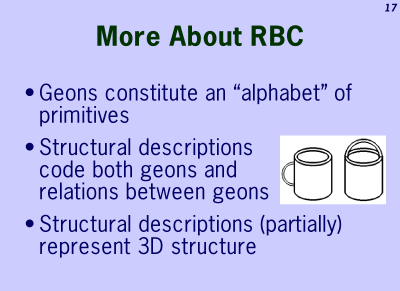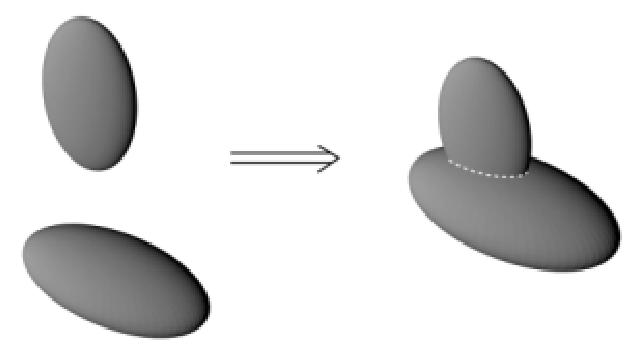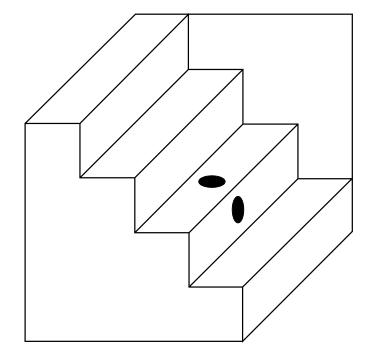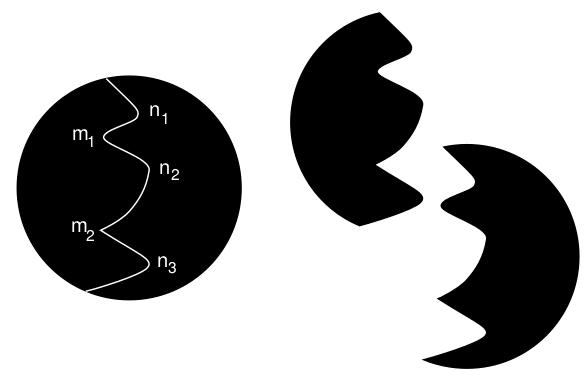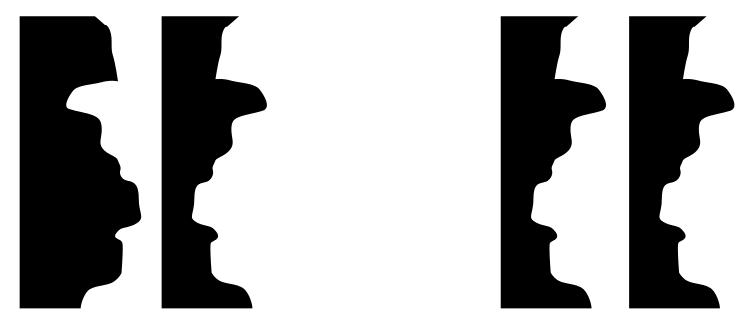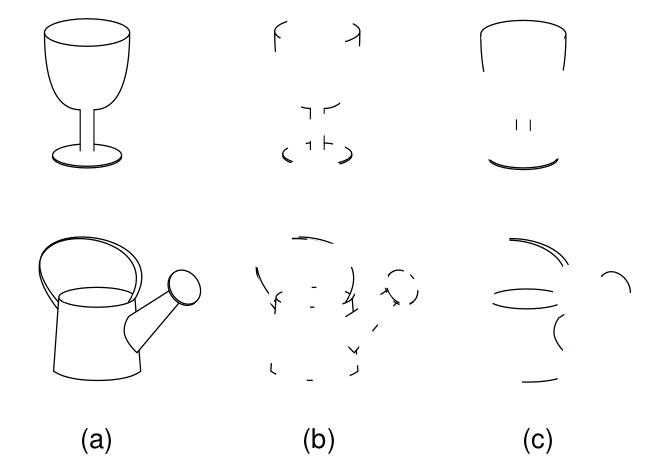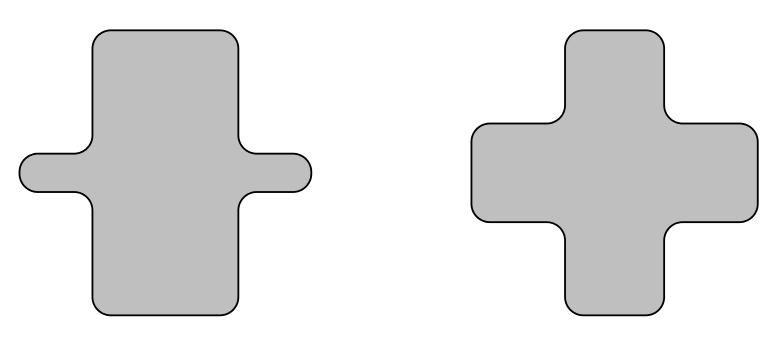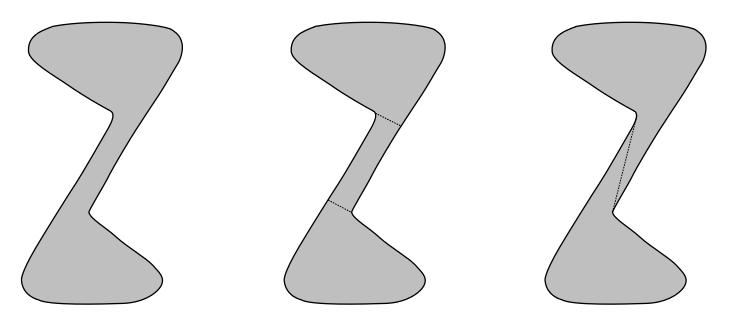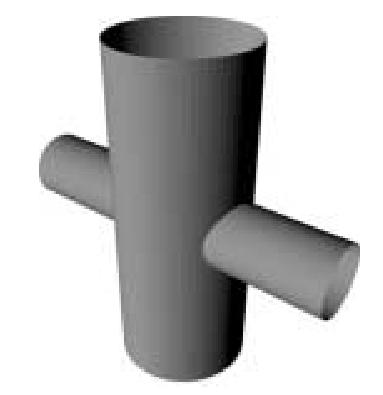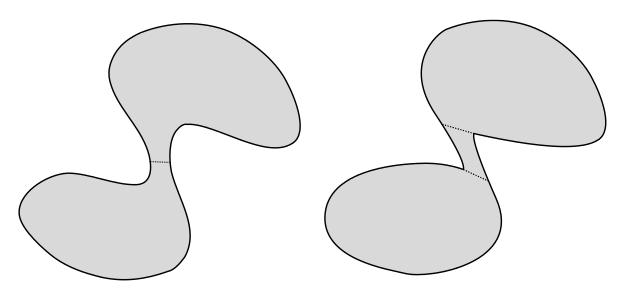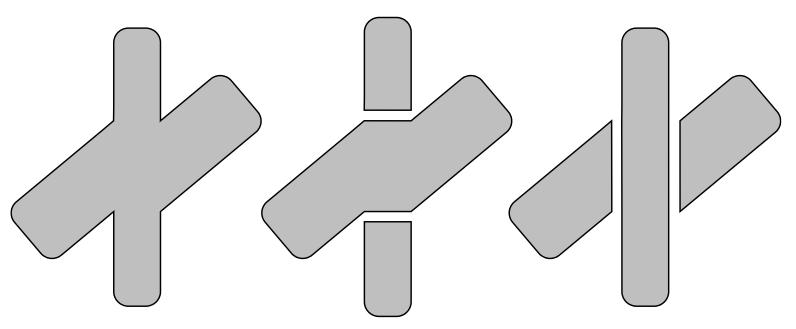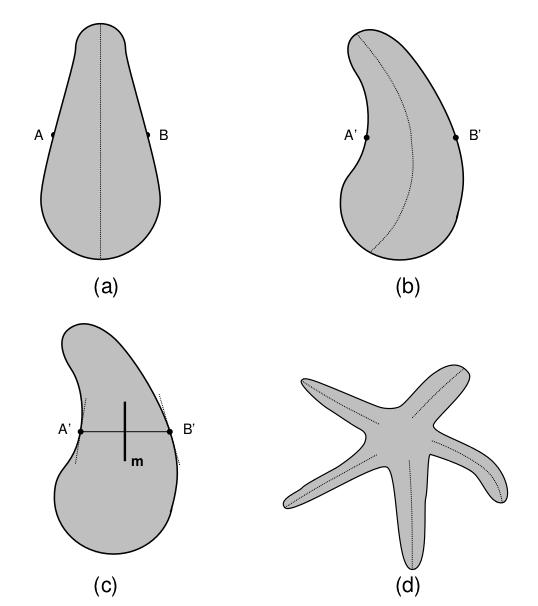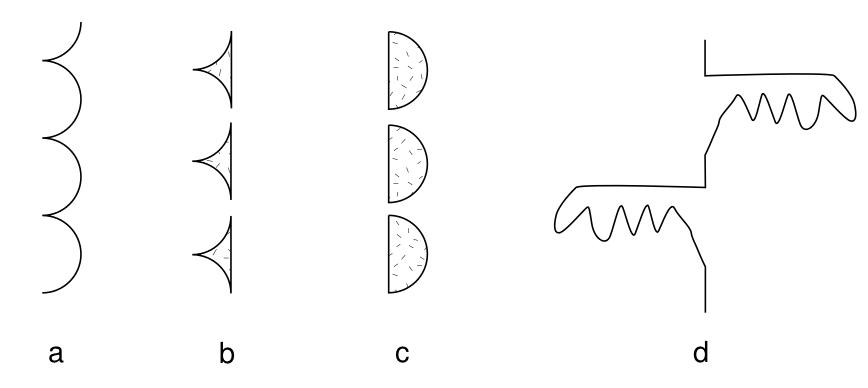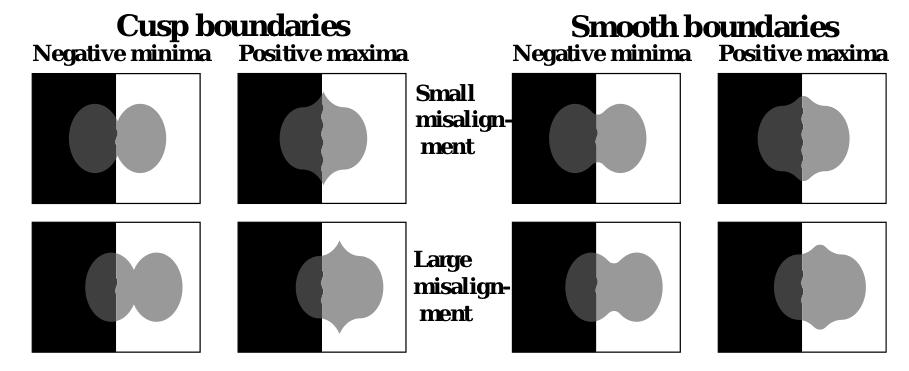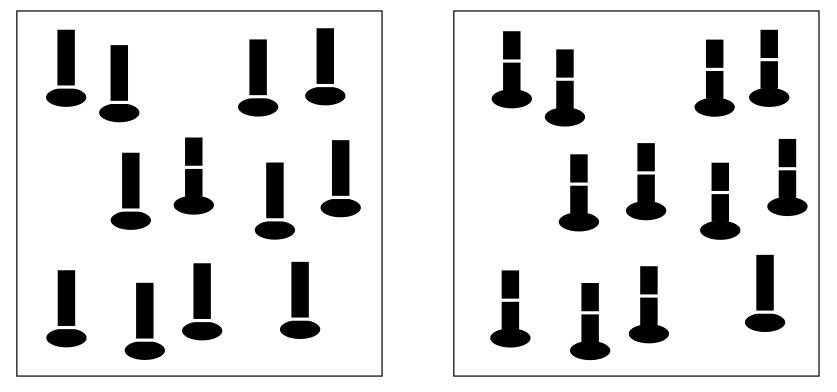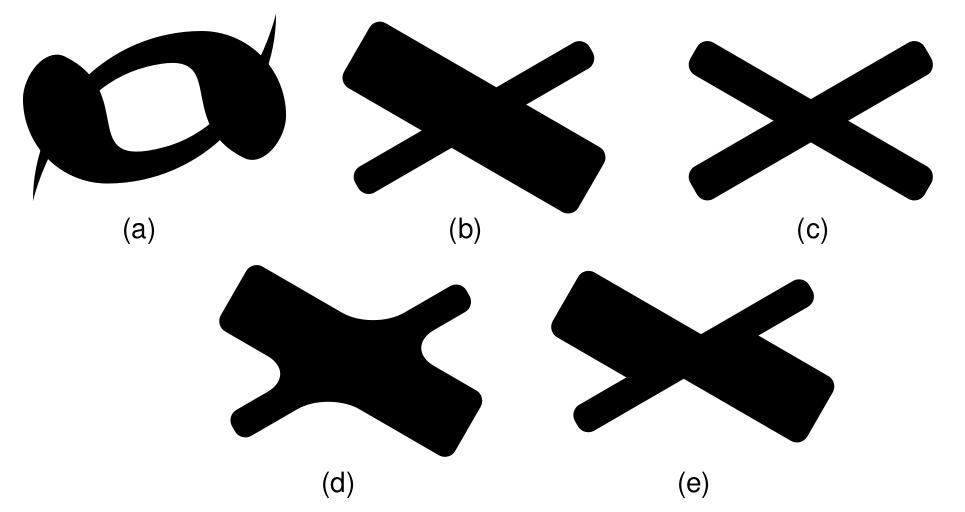Issue of Occlusion / Overlapping
(a), (b), (c) tend to be seen as two
overlapping objects even though
these figures lack any T-junctions to signal occlusion.
Smoothing the negative minima (d), or disrupting the good-continuation
between one set of contours (e),
switches the percept to that of a single object with multiple parts.
References
Attneave:Similarity:1950
Attneave, F., "Dimensions of
Similarity," American Journal of
Psychology, vol. 63, pp. 516--556, 1950.
Attneave:Visual:1954
Attneave, F., "Some Informational
Aspects of Visual Perception," Psychological
Review, vol. 61, pp. 183-193, 1954.
Biederman:Components:1987
Biederman, I.,
"Recognition-by-components: A theory of human image understanding," Psychological Review, vol. 94, no.
2, pp. 115-117, 1987.
Blum:Shape:1973
Blum,
H., "Biological Shape and Visual Science," Journal of Theoretical Biology,
vol. 38, pp. 205-287, 1973.
Siddiqi:Parts:1995
Siddiqi, K., &
Kimia,
B., "Parts of visual form: Computational aspects,"
IEEE Transactions on PAMI, vol. 17,
no.3, pp. 239-251, March 1995.
Siddiqi:Triangle:2001
Siddiqi, K.,
Kimia,
B., Tannenbaum, A., & Zucker, S., "On the psychophysics of the
shape triangle," Vision Research, vol. 41, no. 9, pp. 1153-1178, 2001.
Sing:Part:2001
Sing, M., &
Hoffman,
D., "Part-Based Representations
of Visual Shape
and
implications for visual cognition,"
Chapter 9 in From Fragments to Objects: Grouping and Segmentation
in
Vision, T. F. Shipley & P. J. Kellman (Eds.), pp. 401-459. Elsevier
Science. 2001.
- Local copy

